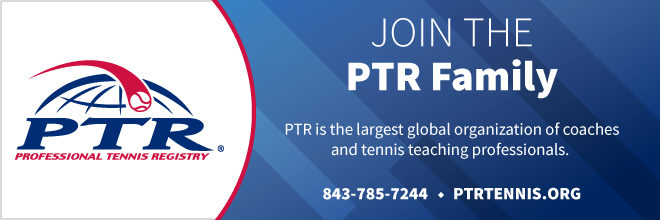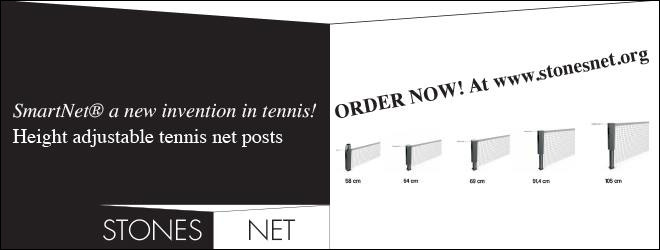My God, what a match!! As a rabid
Nadal fan I was running out of fingernails to bite! Rafa won
this one over Medvedev at 6-4 in the fifth, in close to five
hours of excruciating tennis. Rafa was up two breaks in the fifth,
but with the tank moving towards empty, he was having great trouble
finishing. He dropped serve at 5-2; had a match point at 3-5
with a second serve on his forehand (with Medvedev at midcourt),
choked and missed it; and if he had lost his last service game
at 5-4 (and he was down a break point and tight) I would have
bet on Medvedev for the match.
It was a scary match for Nadal
fans from the beginning. Rafa just looked nervous. He was reluctant
to take risks and hit near the lines. This was particularly evident
by the absence of his flat, sharp, penetrating backhand crosscourt
and his trademark forehand down the line. Instead, he seemed
content to hook his forehand crosscourt (too often short) as
well as slice his backhand, usually up the line, or hit it flat
one side or the other, but not near the lines.
As a consequence, Medvedev generally
had control of the points. Luckily for Rafa, Medvedev didn’t
figure out how to finish the points for two and a half sets.
He wasn’t coming to net, nor was he able to consistently
hit winners off the ground. On the other hand, Rafa’s only
reliable offense seemed to be his net attacks, which he used
whenever he got a chance to take control off the ground and with
the occasional serve and volley. And during this time Rafa’s
strategy worked just well enough for him to get up two sets and
a break in the third. But he never looked comfortable nor did
his lead ever look safe.
In a nick of time, Medvedev figured
out that just controlling the points wasn’t good enough.
He would need to come forward to finish points, with either a
volley or a winning groundstroke, and he did. In the meantime,
he was moving easily and beautifully, not missing, and serving
with great accuracy and effect. This enabled him to tie the match
at two sets all and led to the heart-stopping finish in the fifth
set.
To be honest, I don’t remember
exactly how Nadal got his two service breaks in the fifth, but
I do recall it was rather fluky and not at all in his usual comfortable,
Nadal manner. Nadal was tiring and Medvedev looked about the
same as he did in the first set. Nadal got across the finish
line by a whisker, and if I were Nadal, I would never want to
play Medvedev again.
Bizarre ending to the U.S. Open
women’s final, where Bianca Andrescu defeated Serena Williams
in two nerve-riddled, shaky sets. I don’t know what match
Chris Evert was watching when she said Serena played well but
that Bianca just played a little bit better. I thought Serena
played an awful match (for her).
Bianca is a tough little nut
- hard hitting and hard to scare. But Serena was far from the
same player who had literally destroyed Svitolina in the semi-final.
Serena was obviously afraid of Bianca, and when she is afraid
of an opponent, her game suffers dramatically. Serena is at her
best when she is playing someone who can’t hurt her (like
Svitolina). Unfortunately for Serena, Bianca is a player who
not only could hurt her, but who was not at all afraid to do
so, and Serena knew it.
Andrescu won a close first set
6-3, with a break of serve that was helped by a Williams double-fault
when down break point. There were a number of excellent points
played in it, but it was clear from the beginning that Andrescu
had the power and nerves to stand up the the best Williams could
throw at her. And when Andrescu had the opportunity, she had
the powerful groundstrokes to hit through Serena at any time.
It was clear that she got Serena’s attention, and not in
a good way for Serena.
As the second set started, I
was curious to see if Bianca would take her foot off the gas
or get conservative, which is so common when a player is up a
set in a tense and important match. It immediately became clear
that Andrescu was going to to neither, as she came out firing,
holding serve and breaking Serena. After a one game lapse, Bianca
ran to a 5-1 lead, again helped by Serena, who missed most of
her first serves and every other ball with her groundstrokes.
Then Bianca got shaky, opened
the door for Serena, and Serena began to play a bit better. In
a hurry two service breaks went away for Bianca, and it was 5-all.
To her credit, Bianca steadied down on her serve at this crucial
stage; Serena began to think (and worry) again; Bianca held;
and Serena, with an AWOL first serve, promptly lost her serve
and the match.
In summary, Serena played poorly
when she got frightened by an opponent who was not overawed by
her formidable game and championship trophies and who had a few
impressive weapons of her own. At the same time, Bianca is admirable
for being able to stand up to the magnitude of the situation
and for not panicking when her great opponent came back from
a 1-5 deficit to even the score.
Allen Fox






















































